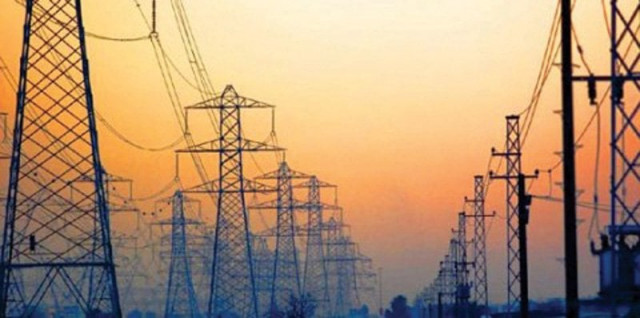Transmission sector reforms and load-shedding
Power production will remain sub-optimal due to low forex reserves along with outages

Electricity load-shedding is back in the last couple of weeks. Urban areas are observing around four to five hours of load-shedding, while the situation is worse in rural areas.
The demand for electricity is around 14,500 megawatts while the system is generating around 10,000MW of electricity. The huge shortfall in generation is witnessed despite very high dependable capacity and low economic growth.
There is nothing special about the current demand for electricity since economic activities have slowed down. Here comes the question of reliability?
The system is bound to collapse during the peak of winter owing to transmission constraints. Technical description goes on to state that the outmoded equipment cannot withstand the dense fog. Fog protection devices which are made up of modern material are not available.
The interconnections among different components of the system are not synchronous. Transmission lines could not be connected to power plants in a timely manner.
The functioning of a typical sub-station is complex as it increases and decreases voltage through transformers and acts as metering for electricity generated by power plants.
It also contains lightening arrestors which control a spike in voltage; circuit breakers act as a safety against overloading; switch gears control and isolate the power system, etc.
Read Unannounced gas load-shedding provokes outcry
All these components are neither properly maintained nor upgraded adequately. In addition, technical staff is not well-trained and lacks professionalism.
Moving away from the technical description, we discuss the political considerations.
The government started structural reforms in the power sector in the early 1990s. Those reforms are still going on. Blackouts and outages are quite normal in the dollar-scarce Pakistan.
For instance, the scarcity of dollars doesn’t allow the government to contract furnace oil in advance. Hence, the import and delivery of furnace oil would get delayed.
In addition, domestic gas is not abundantly available for power production. In that event, imported LNG will act as a substitute that would also require scarce dollars. Hence, electricity production will remain sub-optimal in the presence of low foreign exchange reserves along with usual outages.
However, these blackouts provide opportunity for furthering reforms in the transmission system. Proponents of reforms would come down hard on the government and recommend a market-based solution.
For instance, they would state that transmission constraints could not be tackled by the government so there is an urgent need to bring the private sector in the transmission system.
Read Transmission firm hopes to free Lahore of load-shedding
Then a pre-feasibility study has commenced and a team of consultants provided a technocratic solution without taking into account the ground realities.
Under the Transmission Policy of 2015, the private sector has already constructed a high voltage direct current (HVDC) transmission line as reported by the National Electric Power Regulatory Authority (Nepra) in the State of Industry Report 2022.
This newly constructed transmission line is still underutilised owing to coordination issues. However, the government is bound to pay a certain amount to the private operator as per the purchase agreement.
Theoretically, this transmission line is better in terms of technology and cost. Practically, this turns out to be an expensive solution given resource constraints.
Similarly, the current centralised system of electrical grids is also under attack. Reformers have already proposed microgrids to back up the current system in the event of a blackout as these grids may complement the conventional system.
In a nutshell, the power sector is in the grip of efficiency-driven reforms and the system is still not reliable. There are winners and losers attached with these reforms.
The lower and large strata of population are the losers while the people who are willing and able to pay are the winners.
These reforms have ignored the paramount public interest. Hence, the reforms would entail a huge political cost for the future government.
The writer has worked at SDSB, Lahore University of Management Sciences (LUMS)
Published in The Express Tribune, January 22nd, 2024.
Like Business on Facebook, follow @TribuneBiz on Twitter to stay informed and join in the conversation.



















COMMENTS
Comments are moderated and generally will be posted if they are on-topic and not abusive.
For more information, please see our Comments FAQ